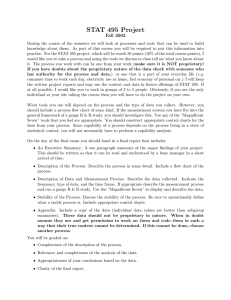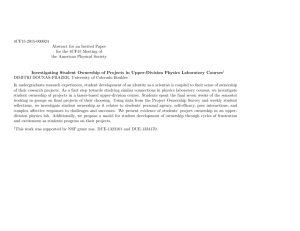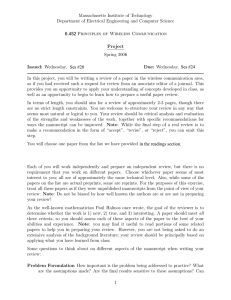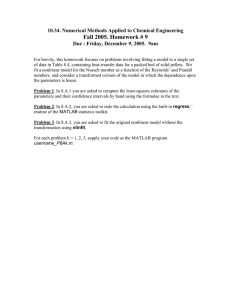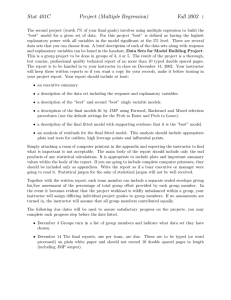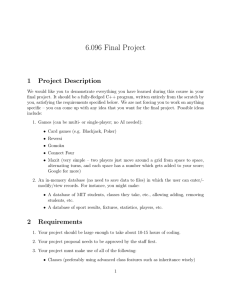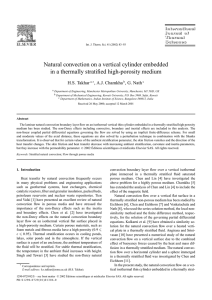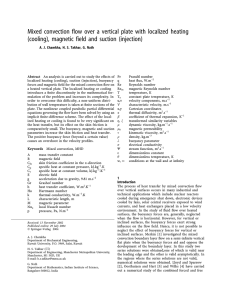3.185 Final Exam Overview Comprehensive Coverage Monday December 8, 2002
advertisement
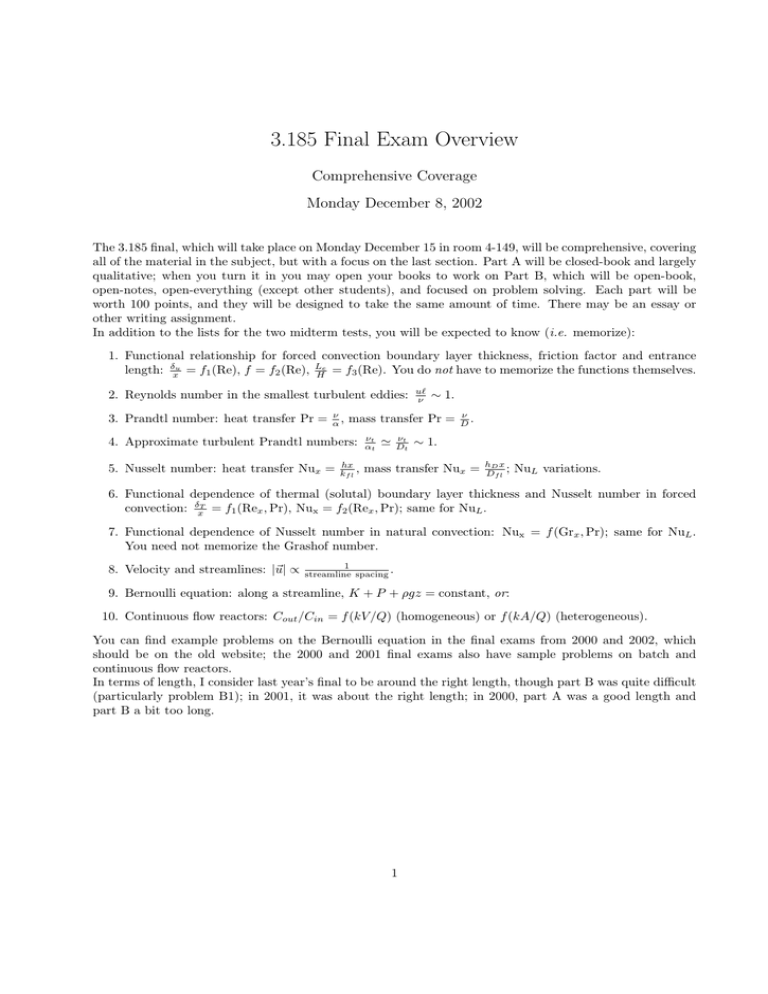
3.185 Final Exam Overview Comprehensive Coverage Monday December 8, 2002 The 3.185 final, which will take place on Monday December 15 in room 4­149, will be comprehensive, covering all of the material in the subject, but with a focus on the last section. Part A will be closed­book and largely qualitative; when you turn it in you may open your books to work on Part B, which will be open­book, open­notes, open­everything (except other students), and focused on problem solving. Each part will be worth 100 points, and they will be designed to take the same amount of time. There may be an essay or other writing assignment. In addition to the lists for the two midterm tests, you will be expected to know (i.e. memorize): 1. Functional relationship for forced convection boundary layer thickness, friction factor and entrance length: δxu = f1 (Re), f = f2 (Re), LHe = f3 (Re). You do not have to memorize the functions themselves. 2. Reynolds number in the smallest turbulent eddies: 3. Prandtl number: heat transfer Pr = ν α, ∼ 1. mass transfer Pr = 4. Approximate turbulent Prandtl numbers: 5. Nusselt number: heat transfer Nux = u� ν hx kf l , νt αt νt Dt � ν D. ∼ 1. mass transfer Nux = hD x Df l ; NuL variations. 6. Functional dependence of thermal (solutal) boundary layer thickness and Nusselt number in forced convection: δxT = f1 (Rex , Pr), Nux = f2 (Rex , Pr); same for NuL . 7. Functional dependence of Nusselt number in natural convection: Nux = f (Grx , Pr); same for NuL . You need not memorize the Grashof number. 8. Velocity and streamlines: |�| u ∝ 1 streamline spacing . 9. Bernoulli equation: along a streamline, K + P + ρgz = constant, or: 10. Continuous flow reactors: Cout /Cin = f (kV /Q) (homogeneous) or f (kA/Q) (heterogeneous). You can find example problems on the Bernoulli equation in the final exams from 2000 and 2002, which should be on the old website; the 2000 and 2001 final exams also have sample problems on batch and continuous flow reactors. In terms of length, I consider last year’s final to be around the right length, though part B was quite difficult (particularly problem B1); in 2001, it was about the right length; in 2000, part A was a good length and part B a bit too long. 1
